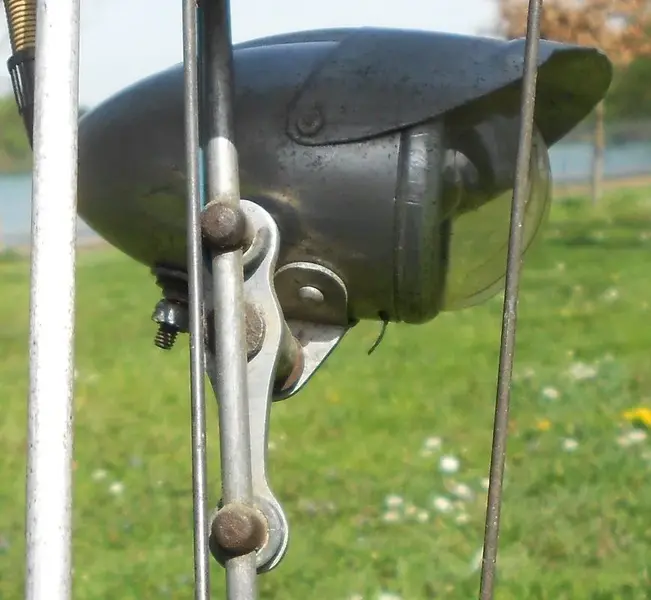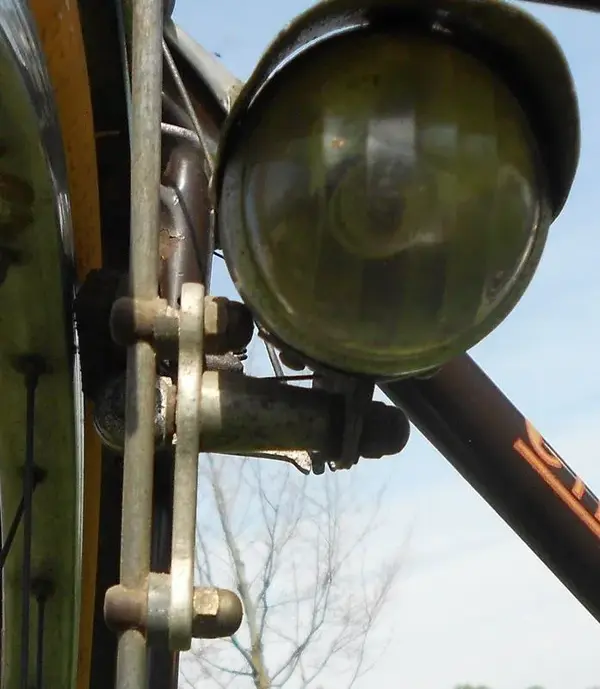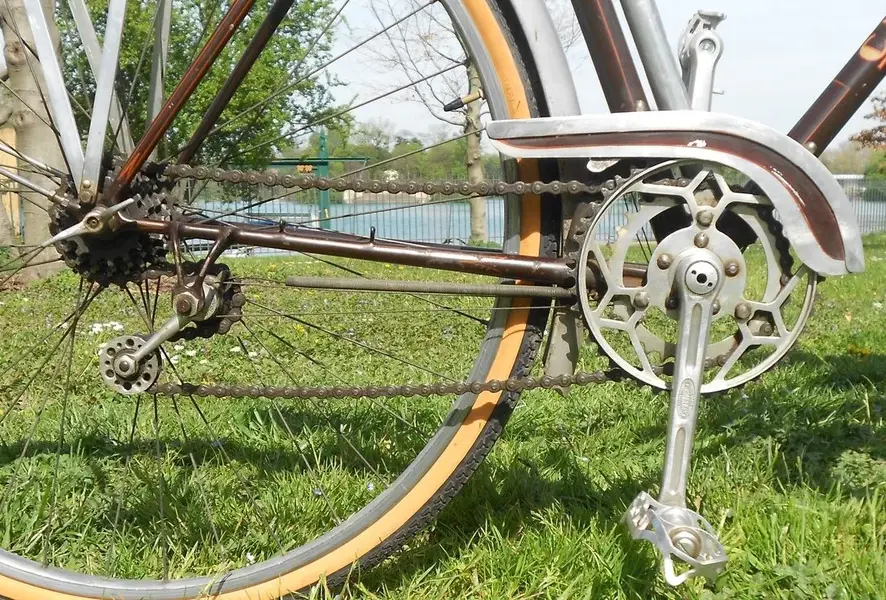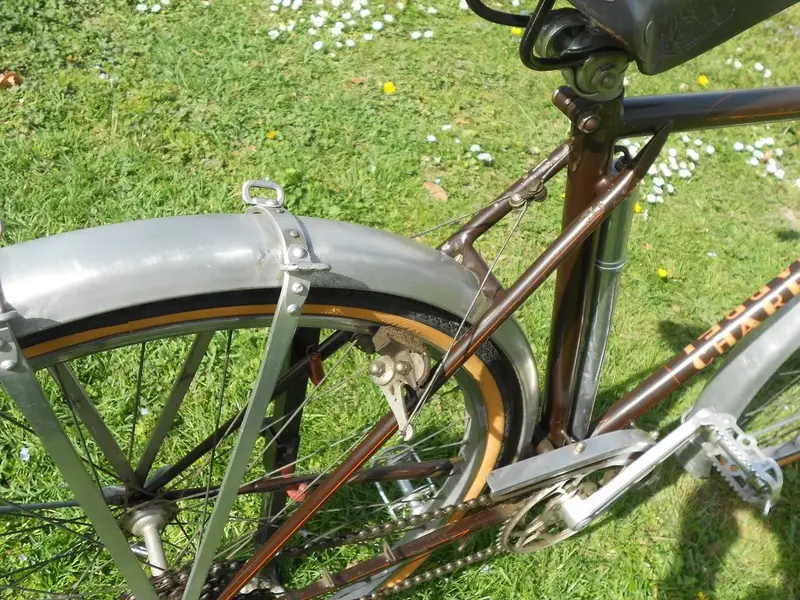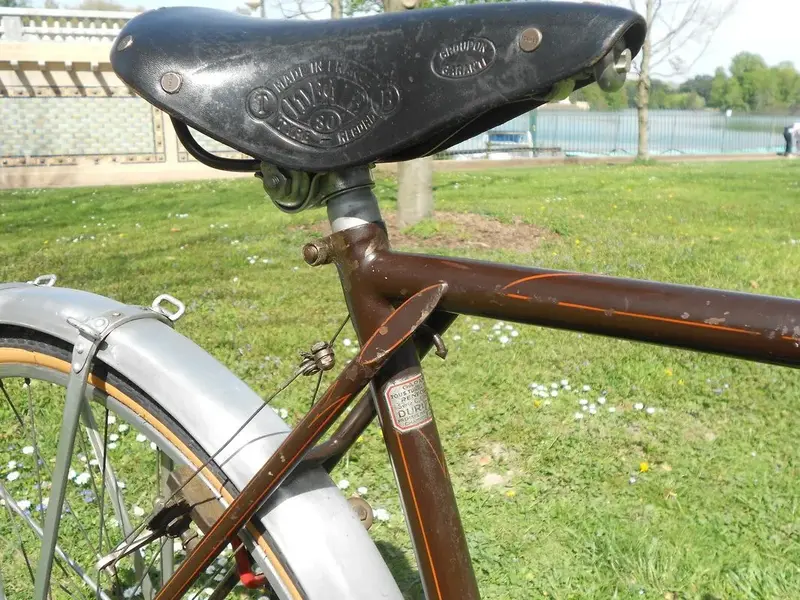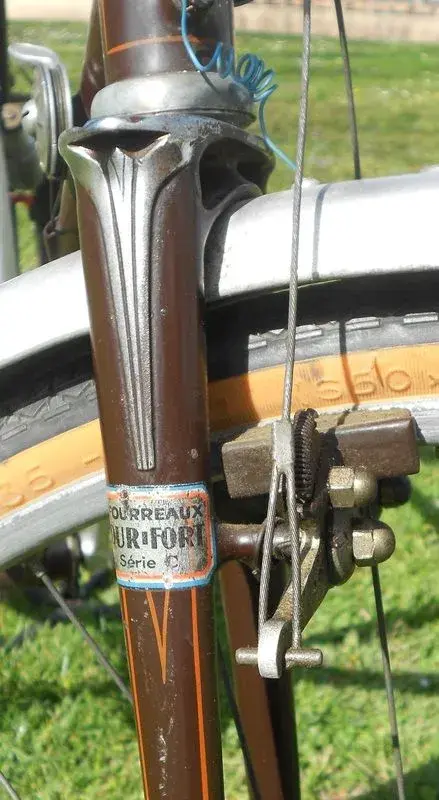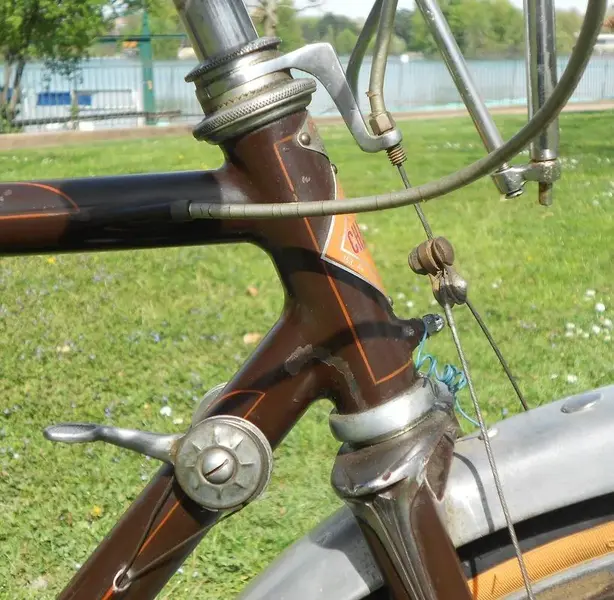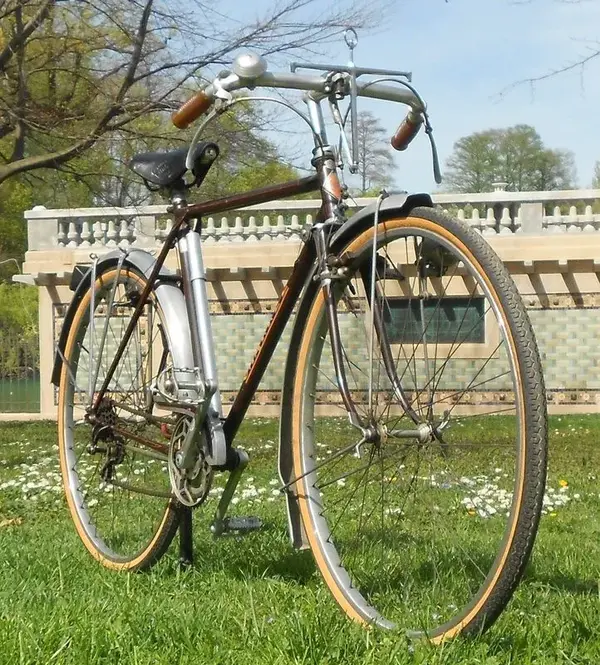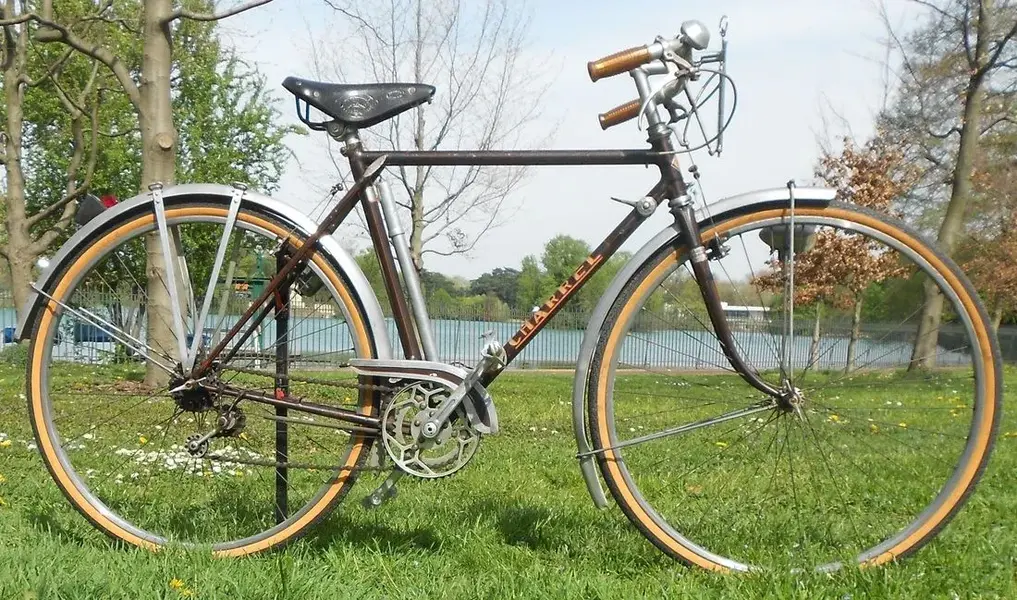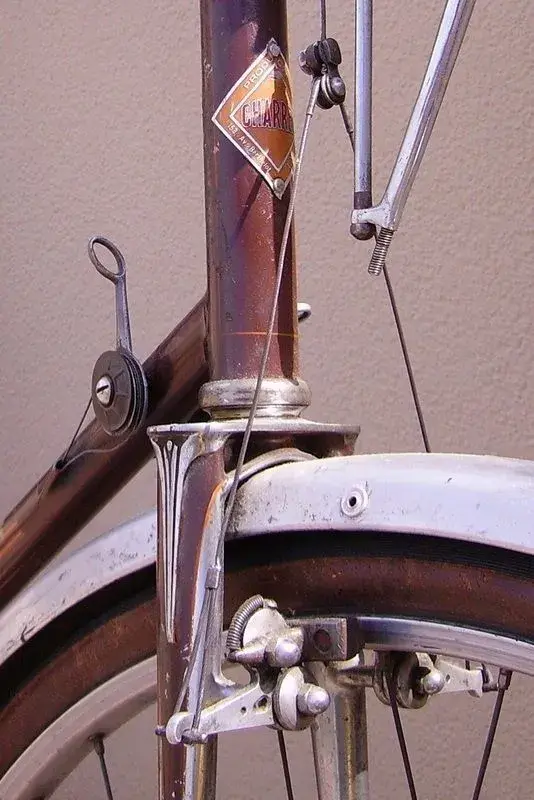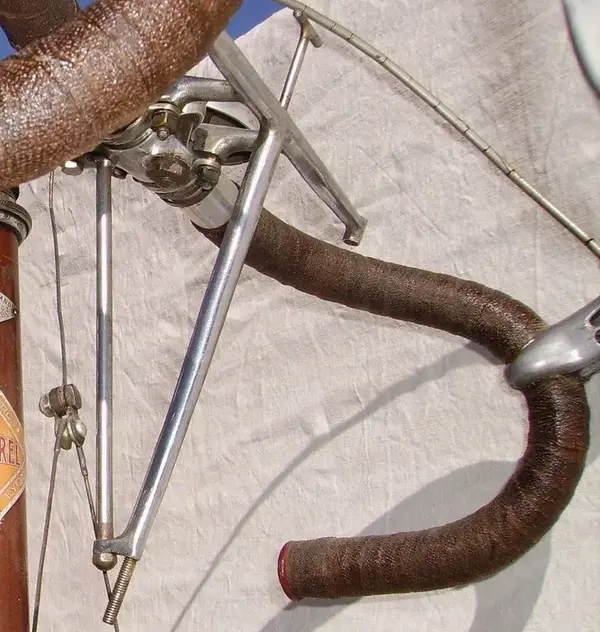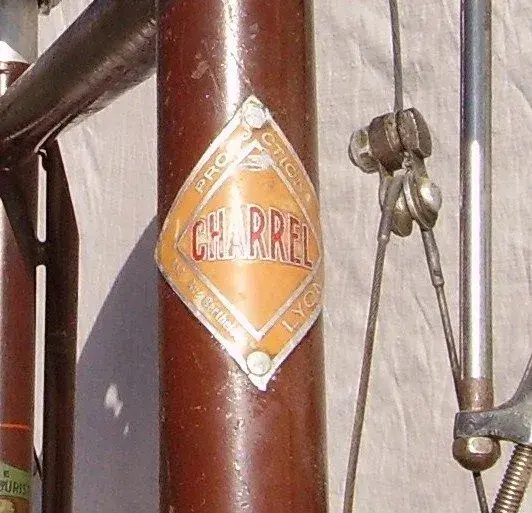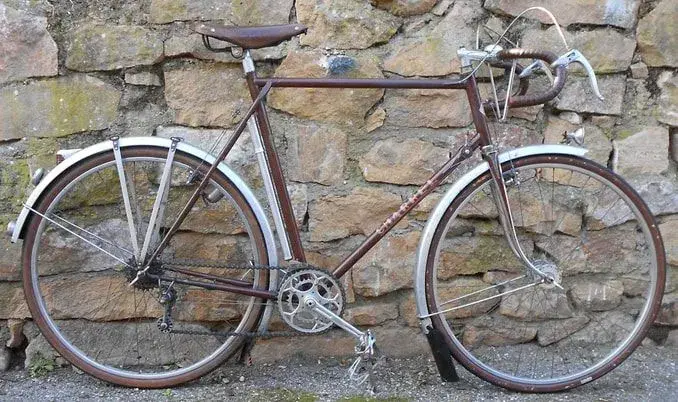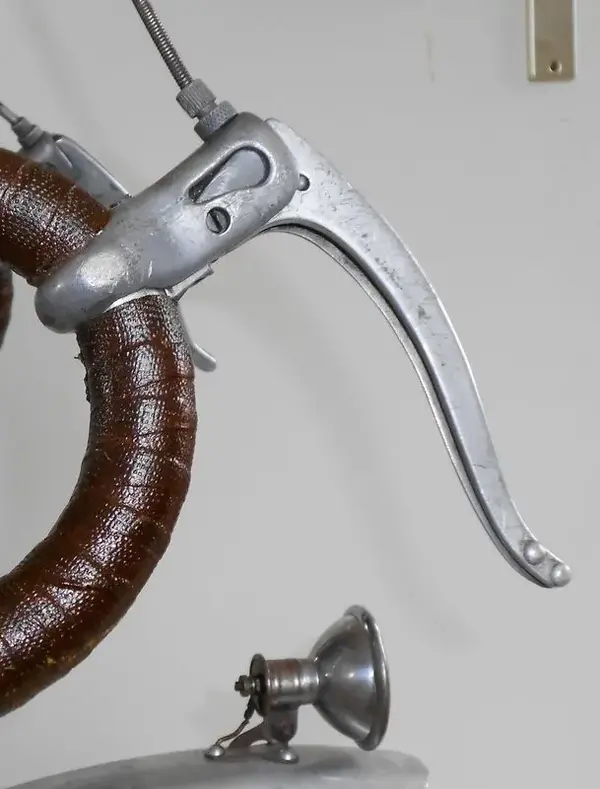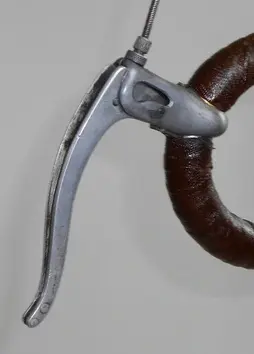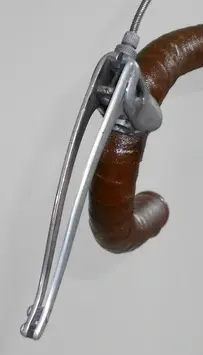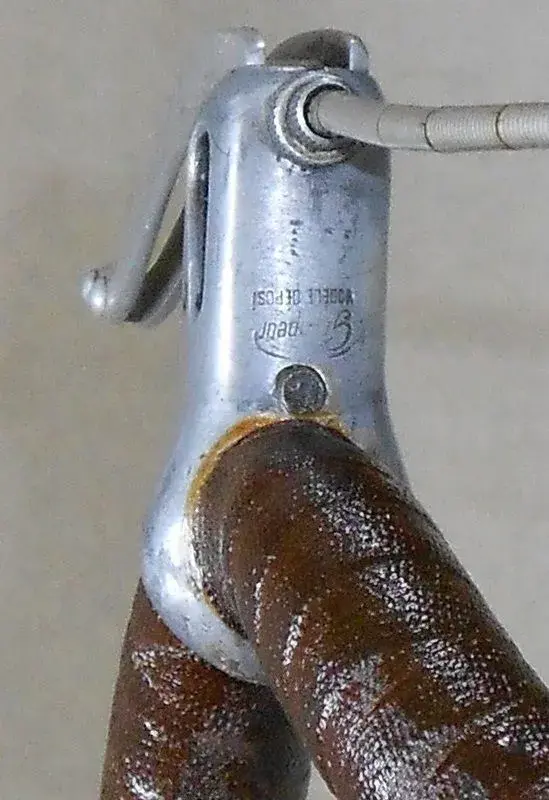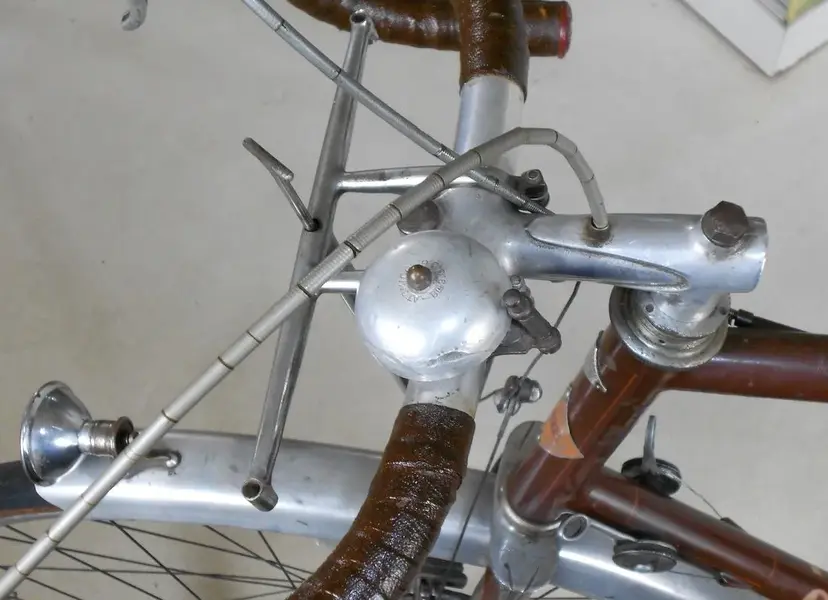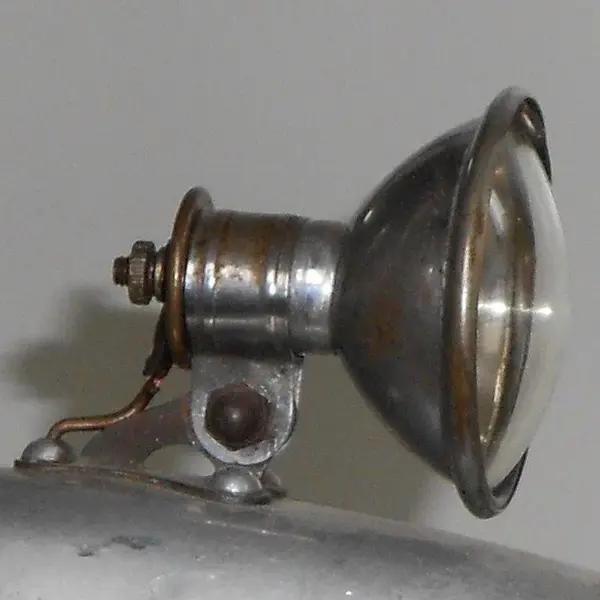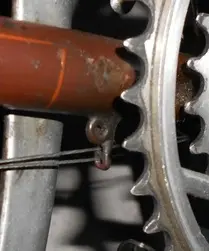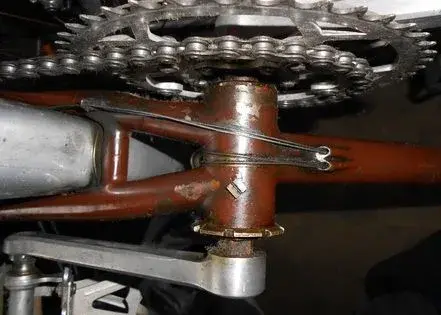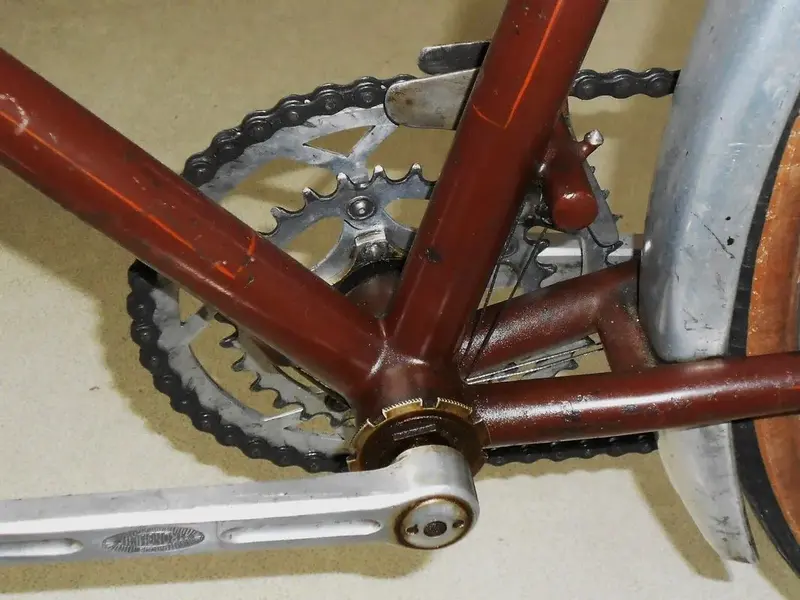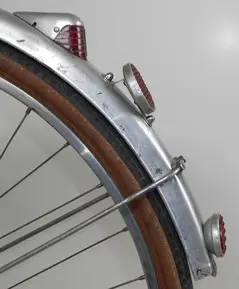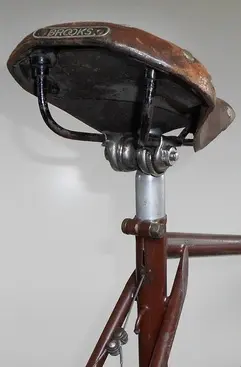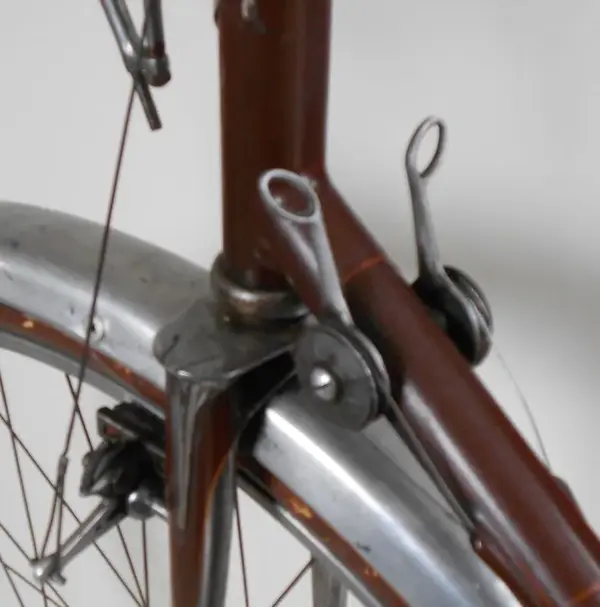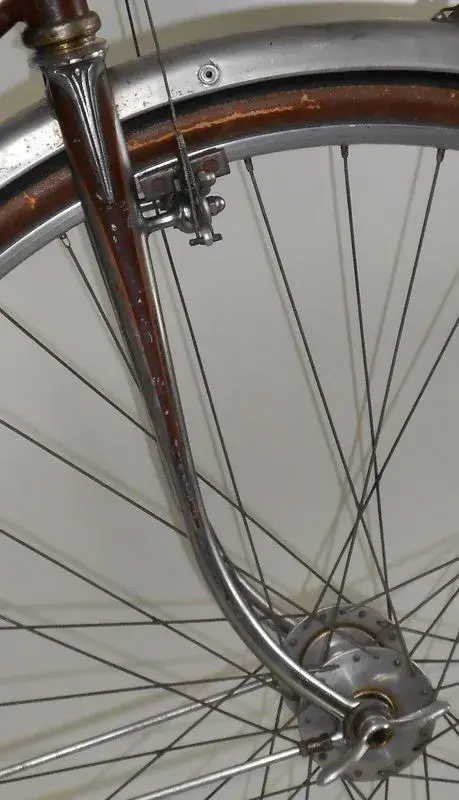Post war Paul Charrel. Translation below. Look at the fork crown, its sculpture.
After the Second World War, Paul Charrel took out a patent for a so-called "rectilinear brake". The pad holder was movable in relation to the "cantilever" and rubbed on a straight "path" to the pad, so that when braking the pad did not describe an arc but moved horizontally. This brake is clearly visible on the machine. It is never easy to make a well-balanced, very small frame, even with 650 wheels.
This one, made for a lady, probably in 1946, with the seatstays almost parallel to the down tube, is a perfect example of Paul Charrel's know-how, as was a wrought iron worker. Off-centre shifter and brakes patented in 1946, with their special cable reinforcements. On the front fender, a large rivet obstructs the attachment point of a first luggage rack (for a child's seat?) replaced by the 2nd generation pannier holder attached to the handlebars, as well as the seat and the rear light. Crossed seatstays. Two high fixing points for the rear mudguard. In-line linkage attachments with two reverse threaded barrels. Cyclo dural rear derailleur, the Charrel front one with cable, controlled by a Cyclo lever, very discreetly hidden under the chain case made from two different ones. This pair of Stronglight chainrings is a novelty in 1946. The first luggage rack had required the headlight to be placed on the side of the wheel. For this purpose Paul Charrel made a nice dural bracket, probably cut out of the same sheet metal which he used to make some brake levers.
